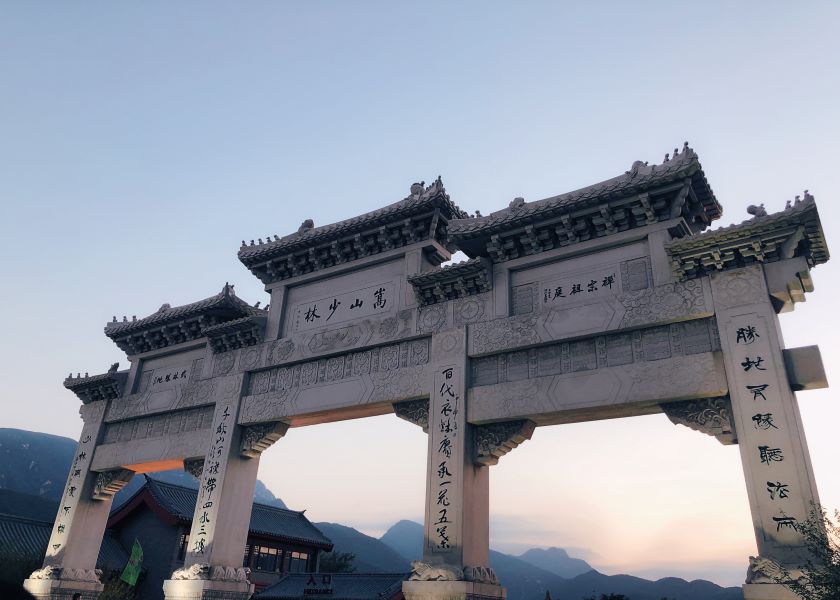Chinese Name: 少林寺 Pronunciation: shào lín sì
Best Visiting Time: March to November
Popular Activities: Watch martial arts
Building Time: 495 A.D
Suggested Visiting Hours: 2-3 Hours
Scenic Zone: About 57,600 square meters (14.23 acres)
Admission Ticket Fare: 80 yuan(The admission fee includes Pagoda Forest, Sanhuang Village, Dharma Cave.)
Address: At the foot of Wuru Peak of Song Mountain, Dengfeng City, Henan Province.
Building Function: The Emperor Xiaowen of the Northern Wei Dynasty (386-557) had the temple built to accommodate the Indian master Batuo (Buddhabhadra, an Indian Buddhist monk)
| Shaolin Temple Scenic Area | Peak Season | Low Season |
| March 1st to November 31st | December 1st to February 31st | |
| Opening Hours | 7:30-18:00 | 8:00-17:30 |
| Closing Time | 18:00 | 17:30 |
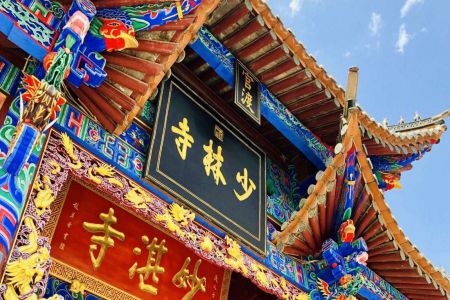
The Shaolin Temple was built in 495 A.D by Emperor Xiaowen in order to house a prominent Indian monk whom he respected.
Located at the foot of Songshan Mountain, Dengfeng City, Henan Province, the Shaolin Temple covers an area of about 57,600 square meters. It is a world-renowned Buddhist temple.
Shaolin Temple, the birthplace of Chinese Zen Buddhism and Chinese Kung Fu, is now a world cultural heritage, a national key cultural relics protection unit, and a national 5A tourist attraction. Shaolin Temple occupies an important position in the history of Chinese Buddhism and is reputed as "the most famous temple in the world".
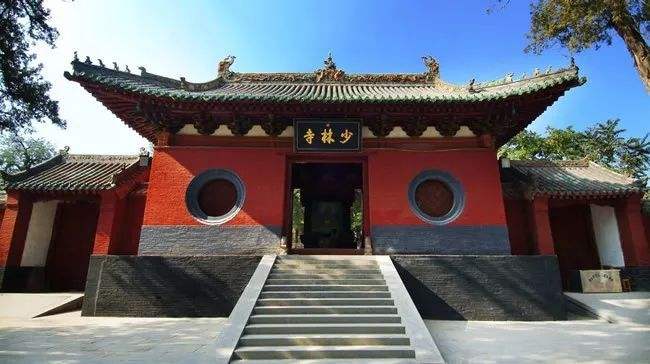
Shaolin Temple has a history of more than 1,500 years.
In ancient times, the famous Indian monk Bodhidharma came to Shaolin Temple to teach Zen Buddhism. After that, the temple gradually expanded and the number of monks increased, and the Shaolin Temple became famous.
Bodhidharma is known as the ancestor of Chinese Zen Buddhism. And the Shaolin Temple is known as the ancestral court of Zen Buddhism. In the early years of the Tang Dynasty, Shaolin Temple was already famous throughout the country.
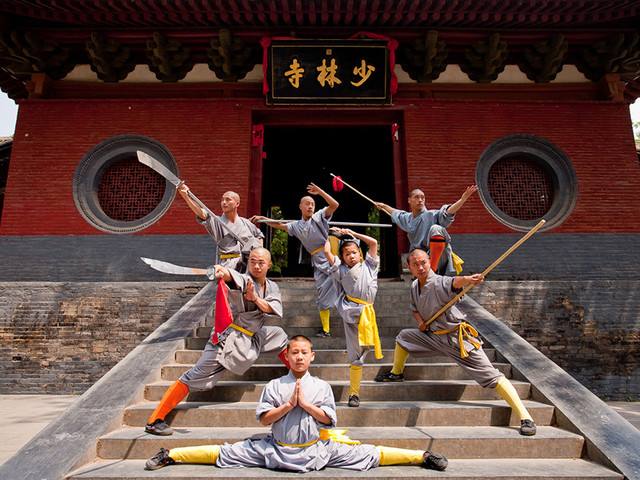
Shaolin Temple was established in 495AD. The Emperor Xiaowen of the Northern Wei Dynasty (386-557) had the temple built to accommodate the Indian monk Batuo (Buddhabhadra).
In the third year of Xiaoming Emperor of the Northern Wei Dynasty, Bodhidharma came to Shaolin Temple. He widely sought followers and imparted Zen Buddhism. From then on, Zen Buddhism was spread in the Shaolin Temple.
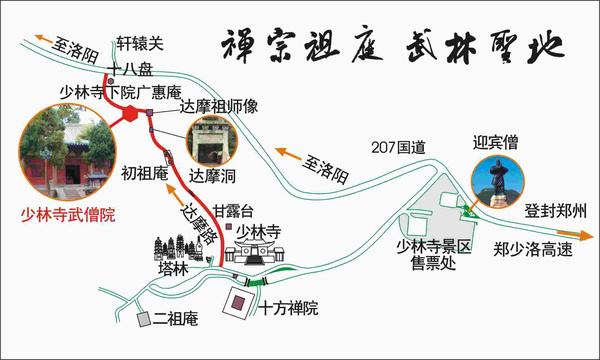
In the early days of the Tang Dynasty, Shaolin Temple was rewarded by Emperor Tang Taizong, because the monks in Shaolin temple helped the establishment of the Tang Dynasty. From then on, the Shaolin Temple became famous and was praised as the most famous temple in the world.
During the Tang and Song Dynasties, Shaolin Temple owned more than 933.33 hectares of land, 36 hectares of temple foundation, more than 5,000 towers, halls and pavilions, and more than 2,000 monks. The Zen religion founded by Bodhidharma flourished in the Tang Dynasty and was the largest Buddhist sect in the Tang Dynasty.
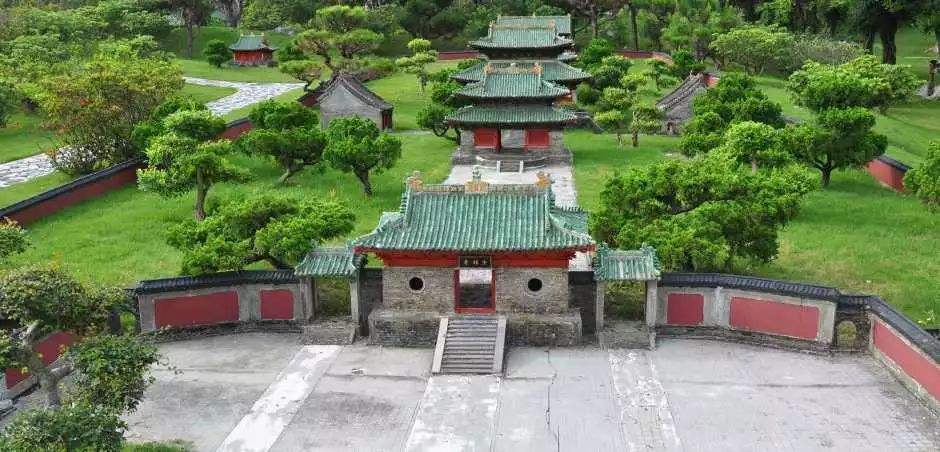
At the peak of the development of Buddhism in the Northern and Southern Dynasties, Emperor Wu of the Northern Zhou Dynasty ordered to reduce the number of monks and temples, and ban the transmission of Buddhism in the third year of Jiande (574 A.D). According to the records, Emperor Wu of the Northern Zhou Dynasty destroyed the Buddhas, and the Shaolin Temple was severely damaged.
In the early years of the Republic of China, the civil war between the revolutionary party and the Beiyang government resulted in Shaolin Temple repeatedly suffering destruction.
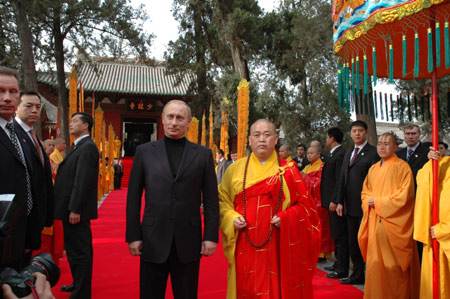
In the thirteenth year of Yongzheng (1735), Emperor Yongzheng personally checked the blueprint for rebuilding Shaolin Temple, decided on the rebuilding plan. In the same year, the mountain gate and the Thousand Buddha Hall were rebuilt. The overhaul and reconstruction of Shaolin Temple cost a huge amount of money.
Since the founding of the People's Republic of China, Shaolin Temple has restored the Zen Hall. The rare ancient books were collected and sorted out. Shaolin Temple Sutra Depository has been listed by the State as one of the key protection units of ancient books in China.
Shaolin Temple is the ancestral Chamber of Chinese Zen Buddhism, a well-known Buddhist temple in China, and the birthplace of Shaolin martial arts.
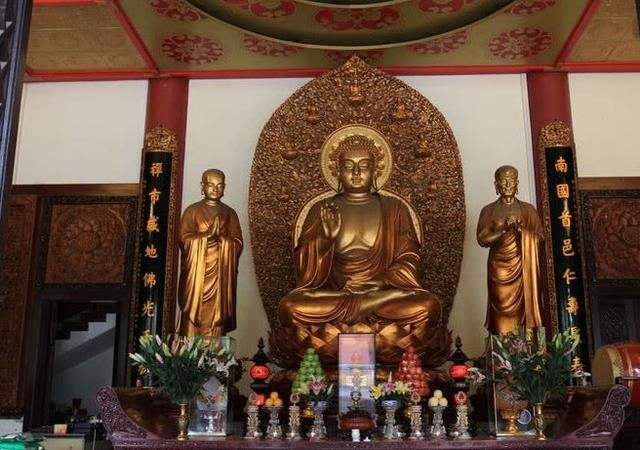
Nowadays, Shaolin Temple is not only famous for its ancient Buddhist culture, but also for its superb and practical Shaolin martial arts.
Shaolin Temple complex mainly includes the main courtyard, Pagoda Forest, Chuzu Temple, Dharma Cave and so on.
Since the movie "Shaolin Temple" was broadcast in the 1980s, Shaolin Kungfu has become famous all over the world. Here you can learn about the daily life of the eminent monks in Shaolin Temple.
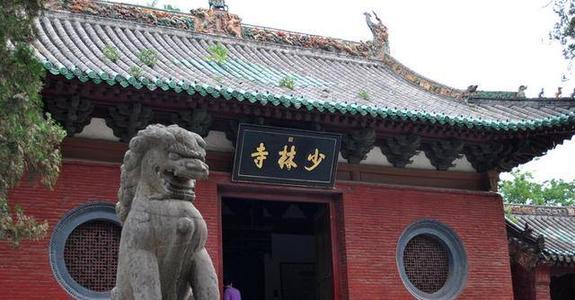
The gate of Shaolin Temple was built in 1735 in the 13th year of emperor Yongzheng of the Qing Dynasty. And it was renovated in 1974. On the forehead of the gate, there are three characters "少林寺" written by Emperor Kangxi of the Qing Dynasty.
There is a pair of stone lions in front of the mountain gate, male and female facing each other, carved from the Qing Dynasty. Two stone workshops stand symmetrically on the east and west sides of the eight-character wall of the mountain gate.
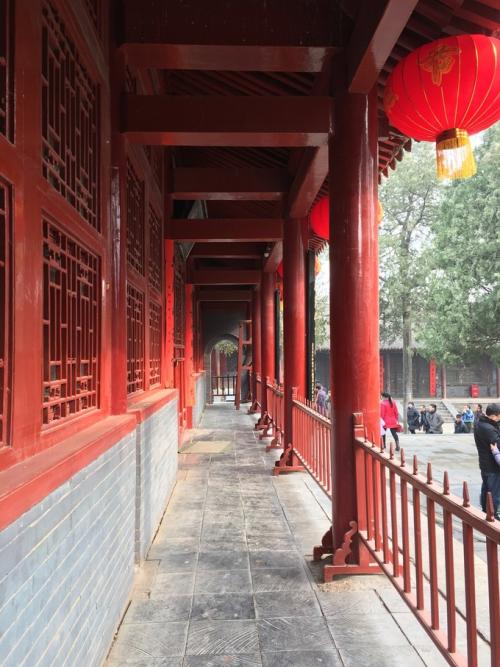
Entering the Gate, it is the Corridor. On both sides of the Corridor, there are many steles hidden by green pines and cypresses. Because of the great number of steles, like a forest, it is also called the forest of steles.
There is a long passageway on the east side of the road. More than 100 famous steles from the Tang Dynasty to the Qing Dynasty are displayed in the corridor, so it is called the passageway of steles. On the west side of the forest of steles, there are groups of clay sculptures and wood carvings.
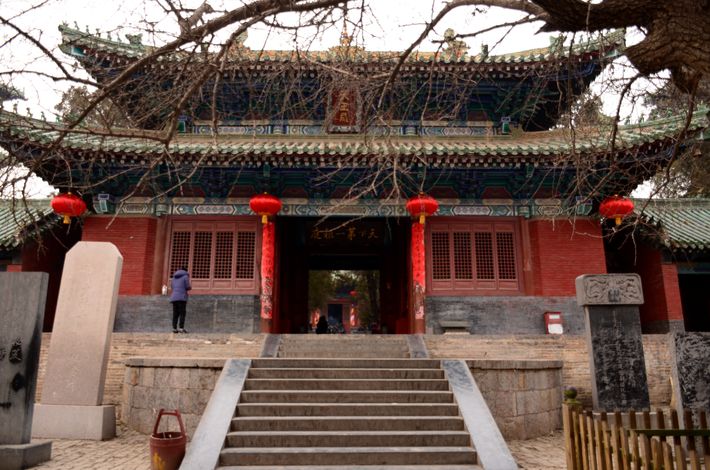
After passing the forest of steles through the Corridor, you can see the Hall of Heavenly Kings. The Hall of Heavenly Kings is located at the end of the forest of steles. The Hall of Heavenly Kings is named after the four heavenly kings symbolizing "wind, regulation, rain, and smoothness", which conveys people’s desire for fine weather and good harvest.
The hall is imposing with red walls and green tiles. Entering the door, there are two statues of King Kong on the left and right side in front of the screen. And there are four statues of Heavenly Kings in the hall, which are mighty and majestic.
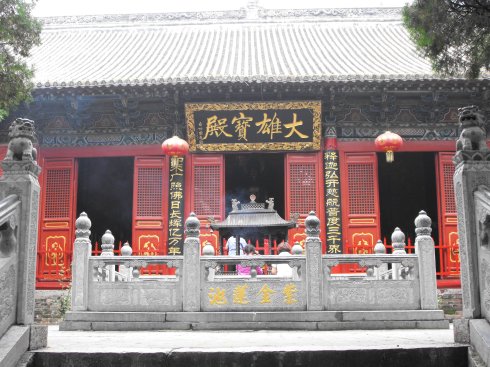
The Daxiong Hall is located behind the Hall of Heavenly Kings. In Shaolin temple, Daxiong Hall is the central place for Buddhist activities. And together with the Hall of Heavenly Kings and the Depositary of Buddhist Texts, it is called the three major Buddhist halls.
Inside the hall, there are statues of Sakyamuni, Medicine Buddha, and Amitabha. In the middle of the hall, there hangs a plaque with four characters "宝树芳莲 (Bao shu fang lian)" written by the emperor Kangxi. There is a statue of Guanyin on the back of the screen wall, and there are statues of eighteen arhats on both sides.
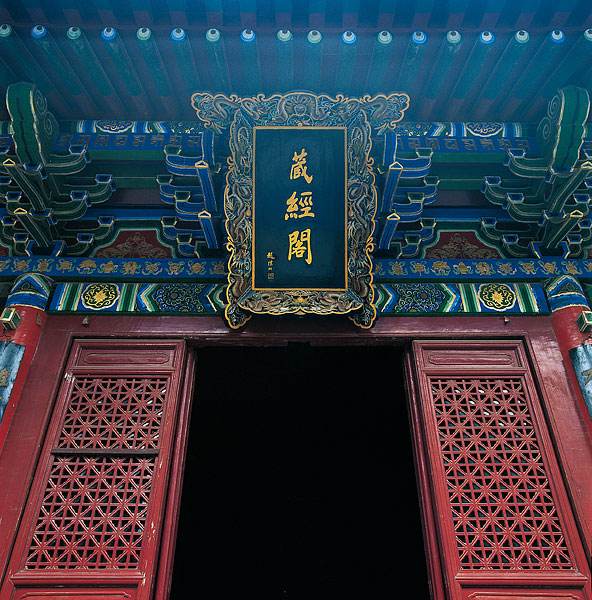
The Depositary of Buddhist Sutras is located behind the Daxiong Hall. The Depositary of Buddhist Sutras, also known as the Dhammasala, was built in the Ming Dynasty. It is the place where monks explain the Buddha dharma to other people.
The Depositary of Buddhist Sutras has a collection of eight million volumes. Inside the pavilion, there is a white marble reclining Buddha donated by a disciple of the Shaolin Temple in 1996.
To the southeast of the Depositary of Buddhist Sutras, it is the Buddhist room, where monks practice meditation. And the western Buddhist room on the opposite side is a hall in charge of receiving guests.
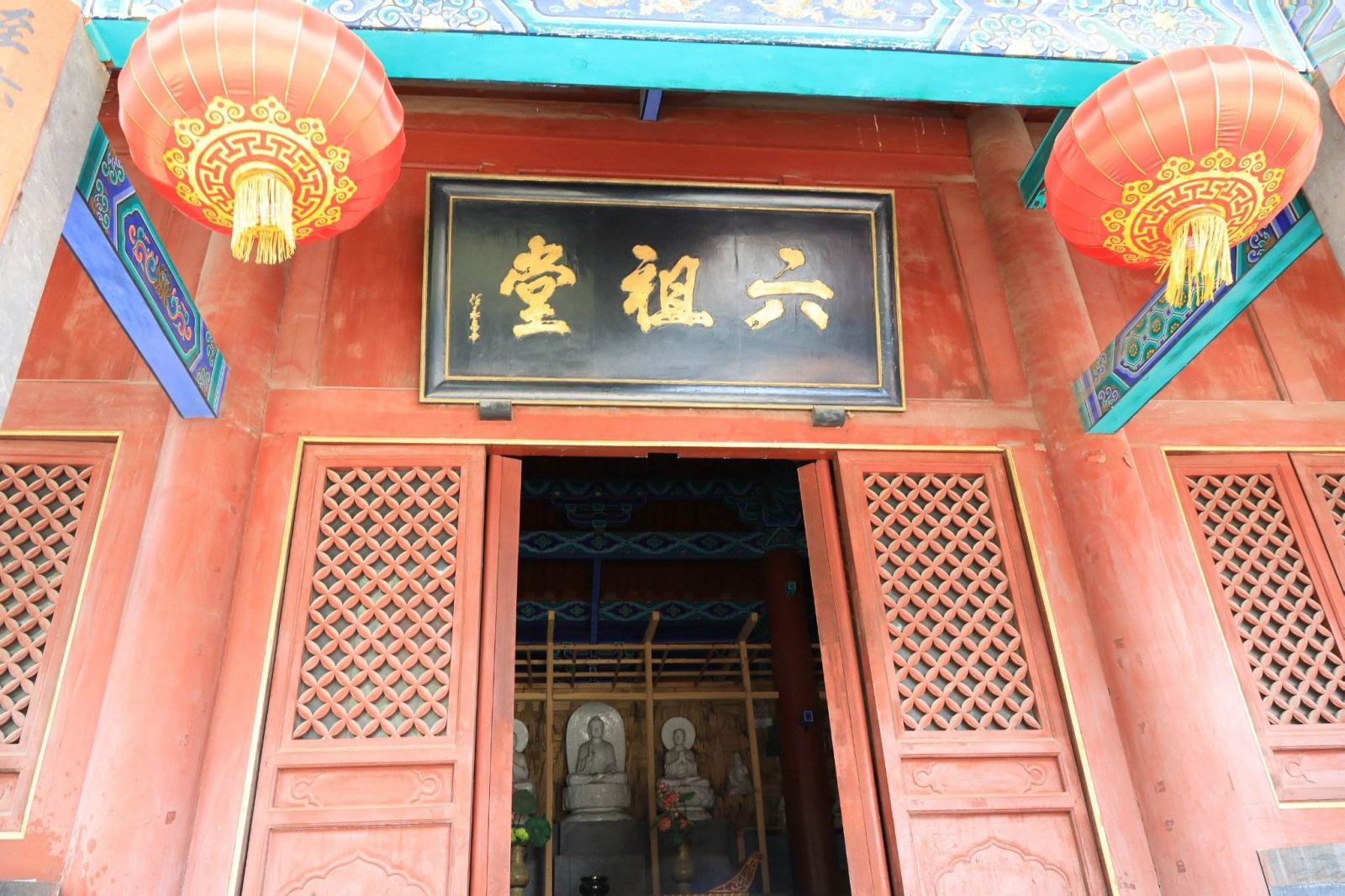
On the west side of the Daxiong Hall is the Liuzu Hall. The front of the hall is enshrined many statues of Bodhisattvas, such as Da Shizhi Bodhisattva, Manjusri Bodhisattva, Guanyin Bodhisattva, Samantabhadra Bodhisattva, and Ksitigarbha Bodhisattva.
On both sides of the hall are enshrined different statues of Buddha, such as the first Buddha of Zen Buddhism, the second Buddha Hui Ke, the third Buddha of Sengcan, the fourth Buddha of Taoism, and the fifth Buddha Hongren, the sixth Buddha Huineng.
In the corridor in front of the hall, there is a big iron bell cast during the Wanli Period of the Ming Dynasty, weighing about 650 kg.
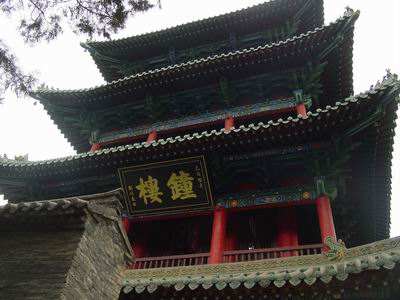
The Bell Tower and the Drum Tower are respectively located on both sides of the Daxiong Hall, with the Bell Tower on the east and the Drum Tower on the west.
Both of the towers have four floors. These two towers are lofty, solemn and magnificent. And they are treasures in the architectural history of China.
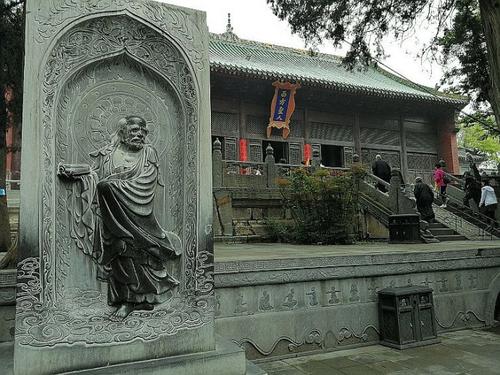
Dharma Pavilion, also known as Lixue Pavilion, was built in the Ming Dynasty. There is a bronze seated statue of Bodhidharma in the shrine in the pavilion, which was cast in the tenth year of Jiajing Emperor in the Ming Dynasty (1531).
Dharma Pavilion is now a place where monks do daily Buddhist activities. The East Side Hall is located on the west side of the Dharma Pavilion. There are the stone statues of Amitabha Buddha inside the hall.
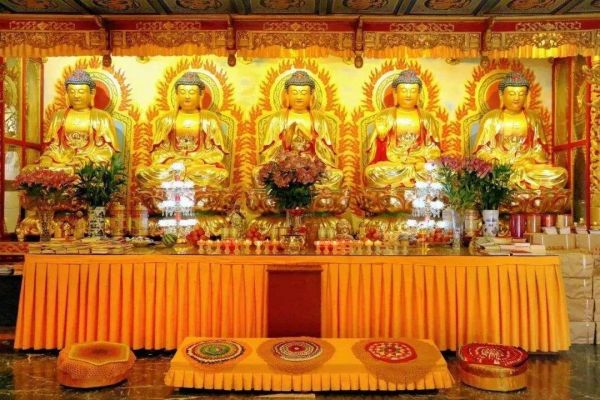
Qianfo Hall, located behind the Lixue Pavilion, is the last hall in Shaolin Temple.
The murals inside the Qianfo Hall are famous, and they are best ones among the frescoes of Shaolin Temple. There are colorful murals on the back of the hall. Each painting is colorful and harmonious in composition, showing the high level of the Tang Dynasty murals.
In the middle of the hall, there is also a bronze statue of Vairocana Buddha and a white jade statue of Sakyamuni. Qianfo Hall covers an area of several hundred square meters, which is the largest existing hall in Shaolin Temple.
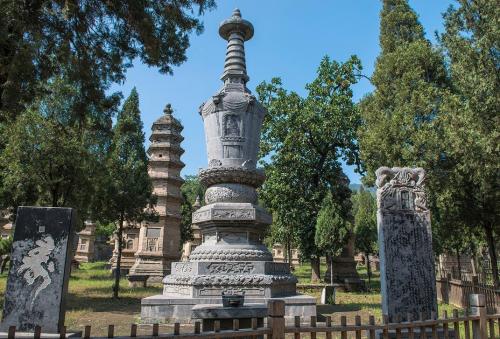
Pagoda Forest is located at the foot of a hill to the west of Shaolin Temple. It covers an area of about 20,000 square meters. There are 231 brick and stone tomb towers of the Tang, Song, Jin, Yuan, Ming, Qing Dynasties.
Here is the cemetery where Shaolin monks of different dynasties rest in peace. There are now more than 240 brick and stone tombs from the Tang Dynasty to the Qing Dynasty.
In 1996, Pagoda Forest and Chuzu Temple of Shaolin Temple were announced as national key cultural relics protection units.
General route:
Enter from the Gate→The Corridor→Hall of Heavenly Kings→Daxiong Hall→Depositary of Buddhist Texts→Liuzu Hall→The Bell Tower and the Drum Tower→Dharma Pavilion→Qianfo Hall→Pagoda Forest→Exit from the Gate.
a. From Zhengzhou to Shaolin Temple
Location: Zhengzhou Automobile Passenger Transport Center Station
Running Time: Between 06:30-11:40, every day
There is a shuttle bus to Shaolin Temple, and the whole journey takes about 2 hours.
b. From Luoyang to Shaolin Temple
Take the bus to Dengfeng from Luoyang Coach Station, and it takes 1.5 hours to get to the Shaolin Temple.
c. From Dengfeng to Shaolin Temple
Take bus No. 8 from Dengfeng West Coach Station to Shaolin Temple. The whole journey takes about 30 minutes.
d. From the Center of Dengfeng to Shaolin Temple
Take bus 1, 2, 3, 6, 8 from the center of Dengfeng, and get off at Shaolin Temple Station.
Chinese: 请带我去少林寺山门。English: Please take me to the Gate of Shaolin Temple.
If you go to Shaolin Temple from Dengfeng Bus Terminal, it takes about 30 minutes (about 38 yuan).
If you go to Shaolin Temple from Dengfeng West Coach Station, it takes about 35 minutes (about 30 yuan).
If you go to Shaolin Temple from Luoyang Railway Station, it takes about 100 minutes (about 206 yuan).
If you go to Shaolin Temple from Longmen High Speed Railway Station, it takes about 90 minutes (about 130 yuan).
